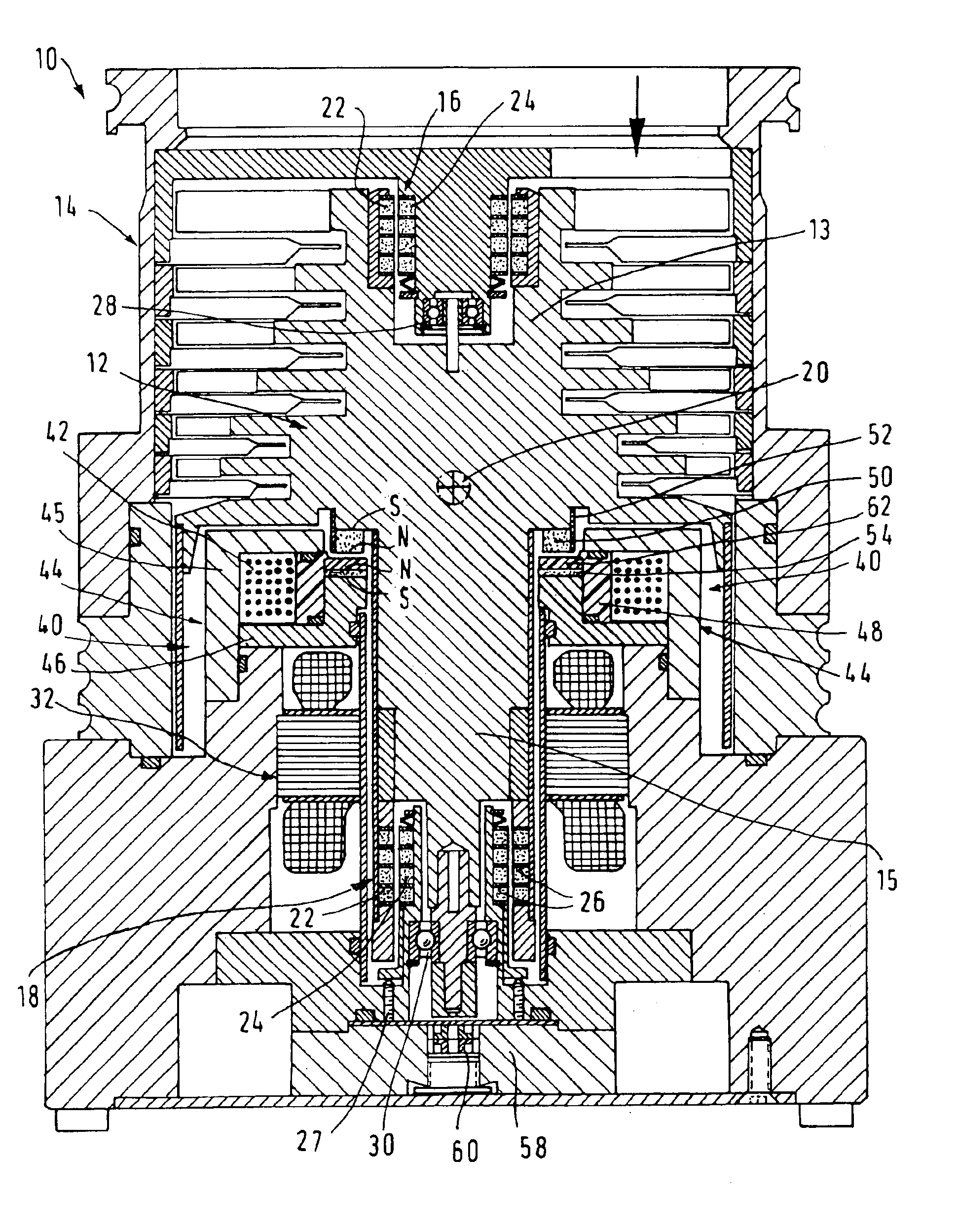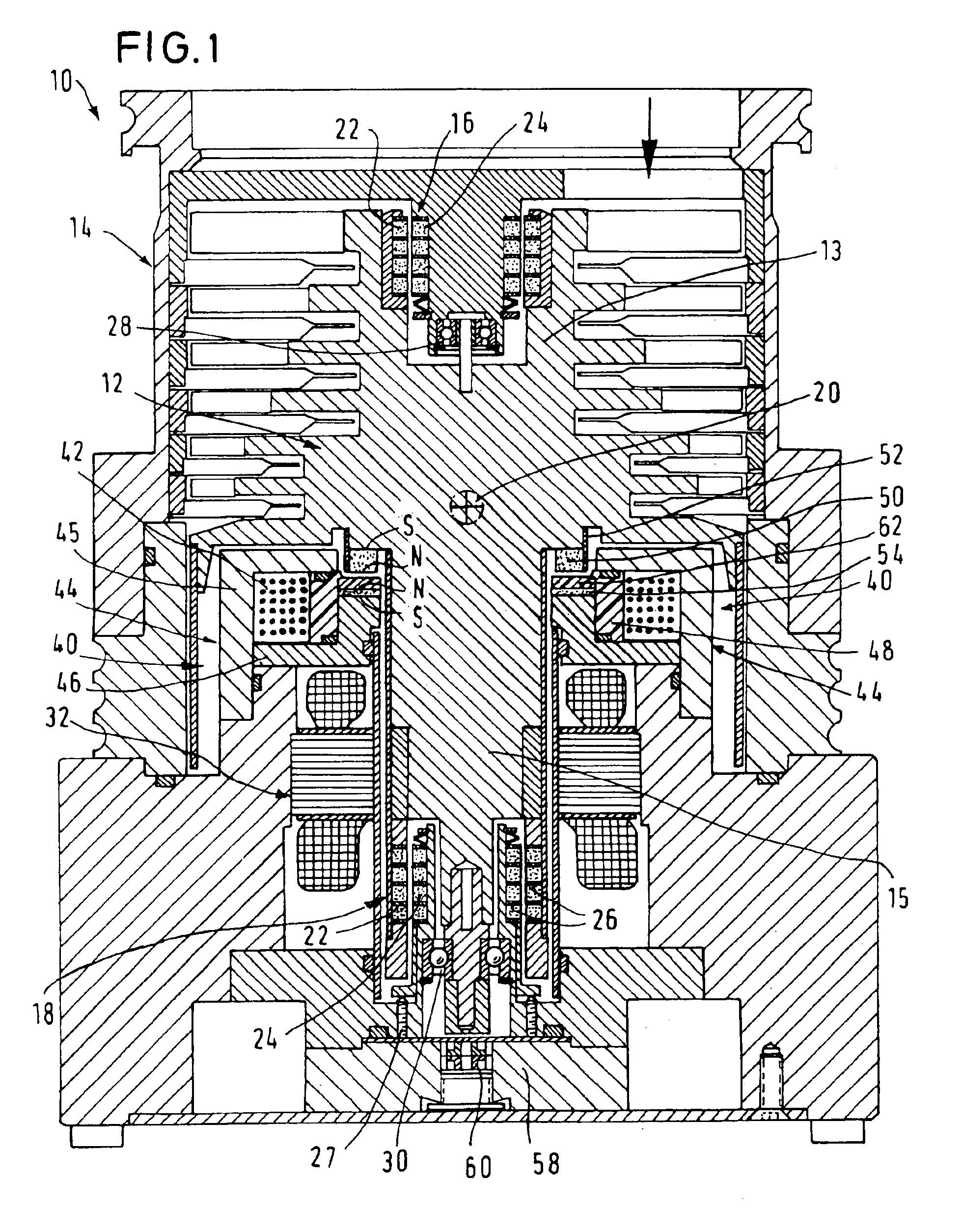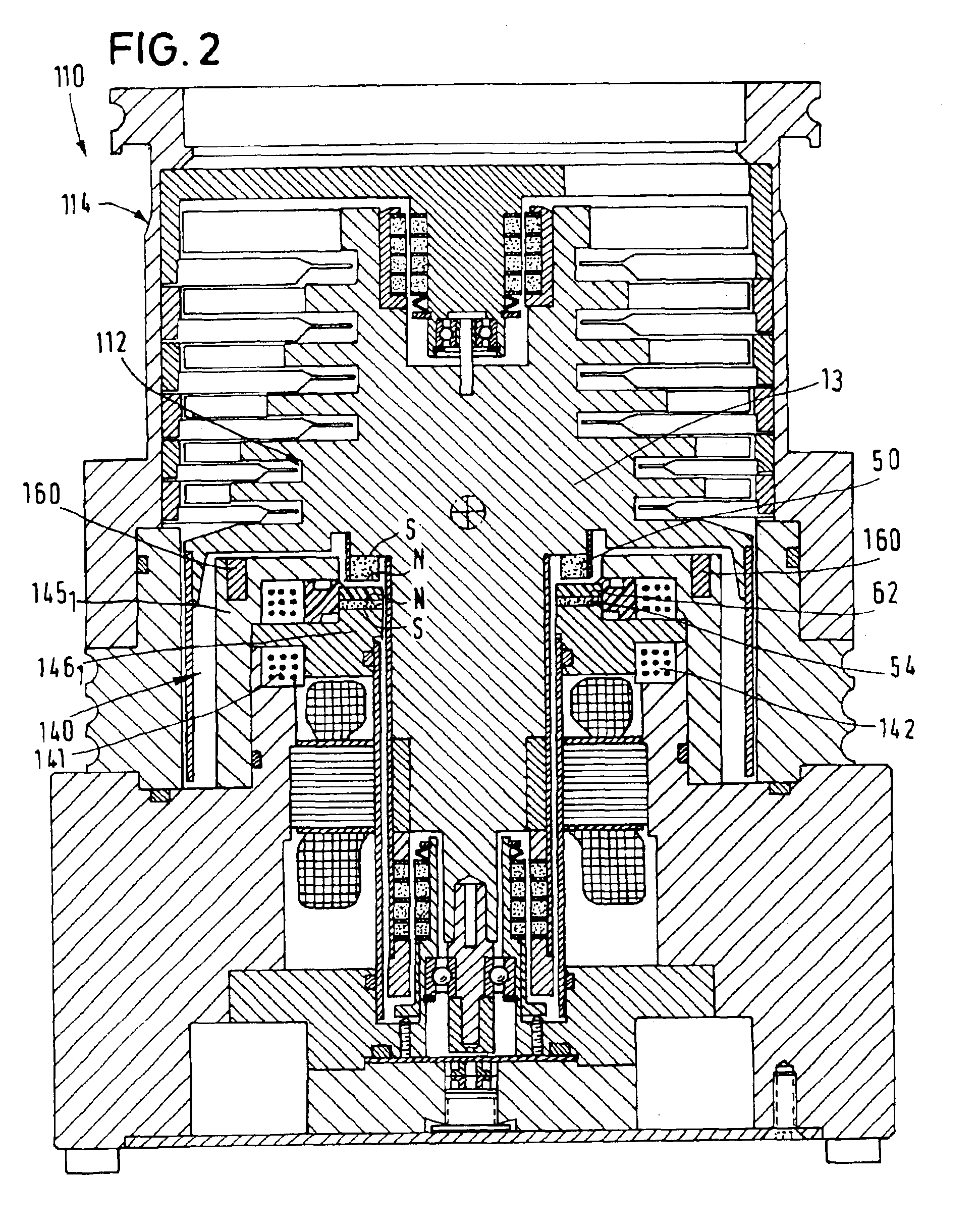Vacuum pump
a vacuum pump and axial magnetic bearing technology, applied in the direction of bearings, shafts, dynamo-electric machines, etc., can solve the problem of not allowing a control of bearing forces, and achieve the effect of improving the axial magnetic bearing of the vacuum pump
- Summary
- Abstract
- Description
- Claims
- Application Information
AI Technical Summary
Benefits of technology
Problems solved by technology
Method used
Image
Examples
third embodiment
In a vacuum pump 210 illustrated in FIG. 4, the magnet coils 241-243 are arranged radially inward and the rotor ring magnet 250, the stator compensating magnet 254 and the damping disk 262 are arranged radially outward with respect to the magnet coils 241-243. Thereby, larger permanent magnets are made possible that produce a larger torque upon the rotor and thus a greater stabilizing effect. By the larger permanent magnets, the carrying power of the axial bearing is increased.
fourth embodiment
In a vacuum pump 310 illustrated in FIG. 5, the permanent magnet 350 of the rotor, the compensating magnet 354 of the stator and the damping disk 362 as well as the gap formed between the damping disk 362 and the permanent magnet 350 of the rotor are not arranged precisely in the transverse plane but inclined at an angle of approximately 15° thereto. The direction of magnetization of the magnets 350, 354 is also inclined by 15° with respect to the transverse plane. The magnetic forces transferred between the stator 314 and the rotor 312 are increased thereby, and they have both an axial and a smaller radial component. Thus, both the axial position of the rotor 312 in the stator 314 and the radial position of the rotor 312 in the stator 314 can be controlled by a suitable control of the magnet coils 141-143. Radial swerves and vibrations of the rotor can be reduced to a minimum thereby.
Because of the compensation of the forces of attraction between the permanent magnet of the rotor a...
PUM
 Login to View More
Login to View More Abstract
Description
Claims
Application Information
 Login to View More
Login to View More - R&D
- Intellectual Property
- Life Sciences
- Materials
- Tech Scout
- Unparalleled Data Quality
- Higher Quality Content
- 60% Fewer Hallucinations
Browse by: Latest US Patents, China's latest patents, Technical Efficacy Thesaurus, Application Domain, Technology Topic, Popular Technical Reports.
© 2025 PatSnap. All rights reserved.Legal|Privacy policy|Modern Slavery Act Transparency Statement|Sitemap|About US| Contact US: help@patsnap.com



